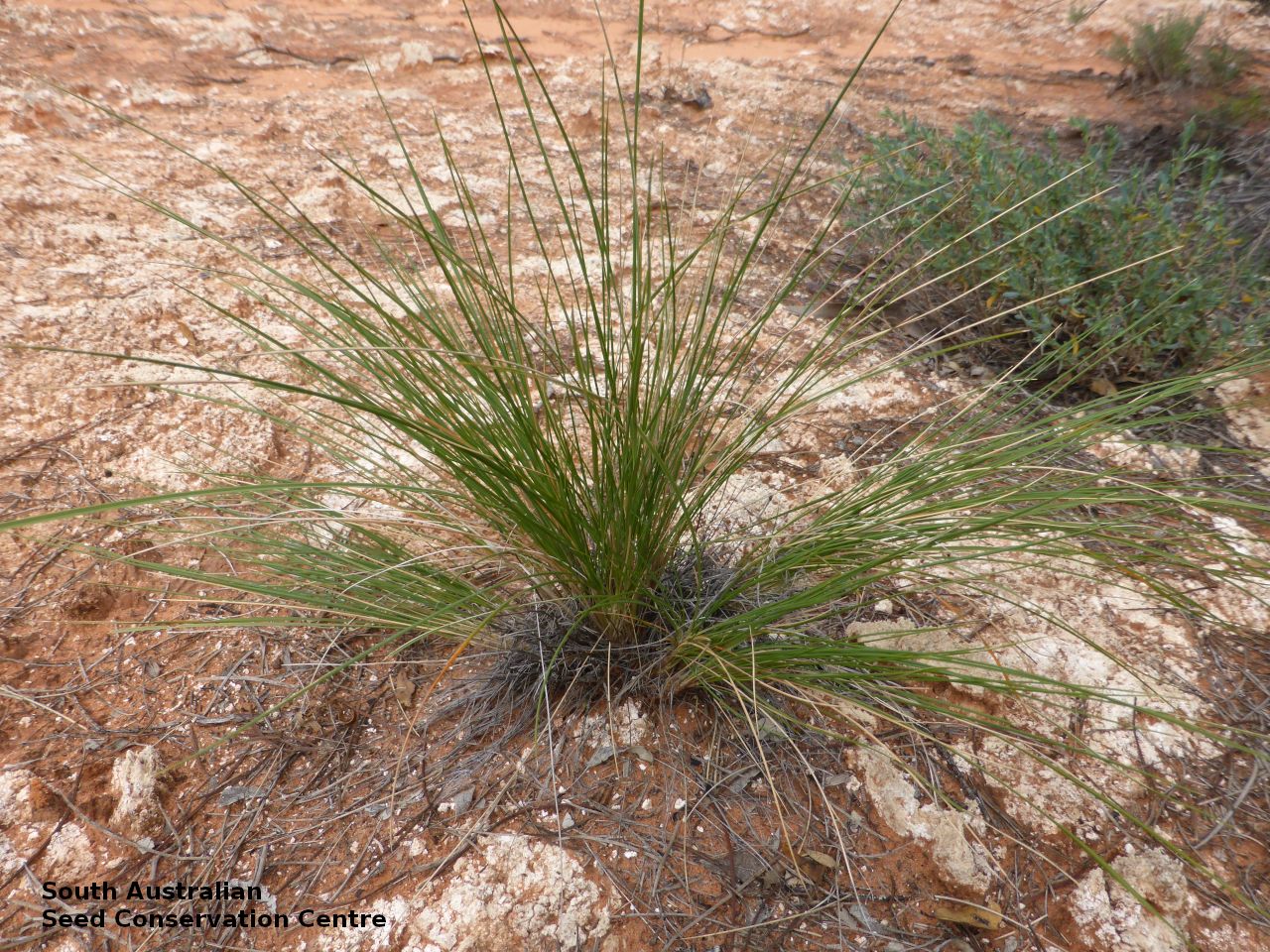













Common names
Club Spear-grass
Etymology
Austrostipa from the Latin 'auster' meaning south and the genus Stipa, referring to the genus being allied to Stipa but restricted to Australia. Nullanulla named after the New South Wales property, Nulla Nulla, were the type specimen was collected..
Distribution and status
Found on the Eyre Peninsula and the Murrayland in South Australia growing on gypseous rises. Also found in New South Wales and Victoria. Native. Rare in South Australia. Rare in New South Wales and Victoria.
Herbarium regions: North Western, Gairdner-Torrens, Eyre Peninsula, Murray, Yorke Peninsula
AVH map: SA distribution map (external link)
Plant description
Tufted perennial grass to 50 cm high, with erect culms and glabrous nodes. Leaves smooth and glabrous or scabrous, with blade rigid, sharp-pointed, tightly involute to 30 cm long and to 1 mm diameter; sheath of upper leaves broadly dilated around culms; mouth of sheath with long woolly dangling hairs. Inflorescence a contracted panicle to 25 cm long, with green to slightly purplish glumes to 14 mm long, the lower 1–4 mm longer than upper. Flowering between September and October.
Key to this species: awn twice bent with coma; panicle contracted with short open branches; glumes narrow straight; callus long fine straight; lemma smooth, shiny glabrous or with sparse hair; lower glume (9-14 mm); awn (50-80 mm); sheath mouth with long woolly dangling hairs; gypseous species Fruits are dark-brown linear-elliptic lemma to 6 mm long, with a smooth surface and sparsely covered with golden hairs; coma erect 1.5 mm long; callus long fine and straight to 2.7 mm long; awn twice bent to 80 mm long, minutely pubescent; palea about equal to lemma and glabrous. Seeds are yellow-brown narrow ellipsoid grain within the lemma. Seed embryo type is lateral.
Seed collection and propagation
Collect seeds between November and December. Use your hands to gently strip the seeds (lemma) off the mature fruiting spike, those that are turning golden color. Mature seeds will come off easily compare to the immature seeds that remain on the spike. Alternatively, you can break off the whole fruit spike to allow some of the seeds to mature further. Place the seeds/spike in a tray and leave to dry for two weeks. No further cleaning is required if only seed collected. If seed spikes collected, use hand to strip off the mature seeds. Store the seeds with a desiccant such as dried silica beads or dry rice, in an air tight container in a cool and dry place. Viability of grass seeds could be very viable, depending on time of seed collections and seasonal conditions. From one collection, the seed viability was high, at 80%.
| Location | No. of seeds (weight grams) | Number of plants | Date collected | Collection number Collection location | Date stored | % Viability | Storage temperature |
|---|---|---|---|---|---|---|---|
| BGA MSB | 2,700 (5.17 g) 2,700 (5.17 g) | 100+ | 9-Nov-2005 | MKJ112 Gairdner-Torrens | 9-Aug-2006 | 80% | -18°C |
| BGA | 18,230 (40.07 g) | 100+ | 10-Nov-2011 | JRG7 Murray | 1-Nov-2012 | 88% | +5°C, -18°C |
Number of plants: This is the number of plants from which the seeds were collected.
Collection location: The Herbarium of South Australia's region name.
% Viability: Percentage of filled healthy seeds determined by a cut test or x-ray.